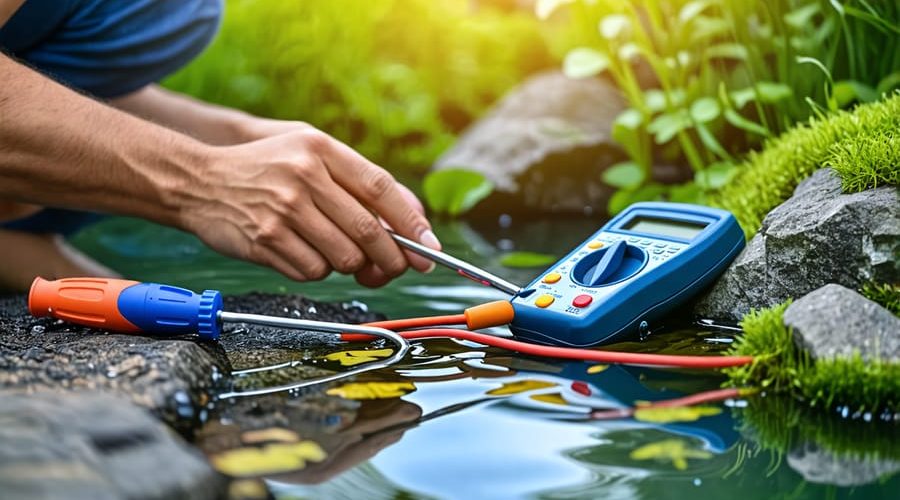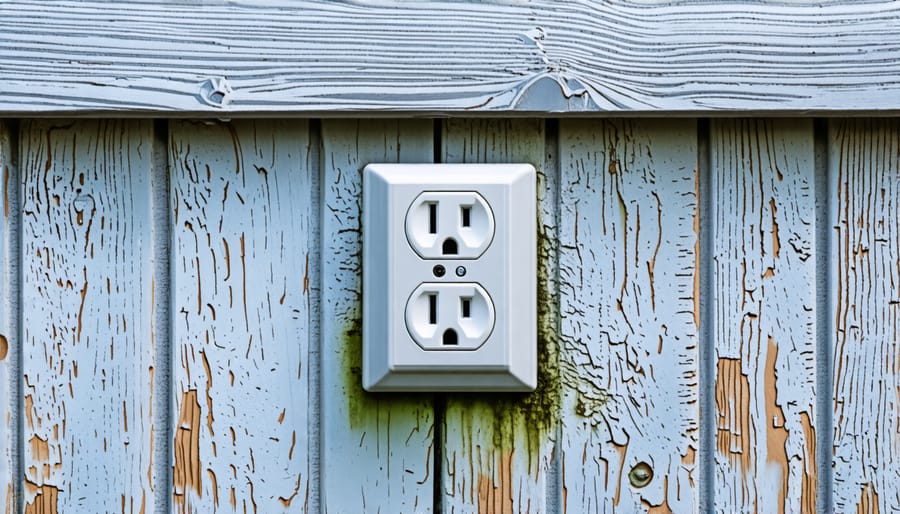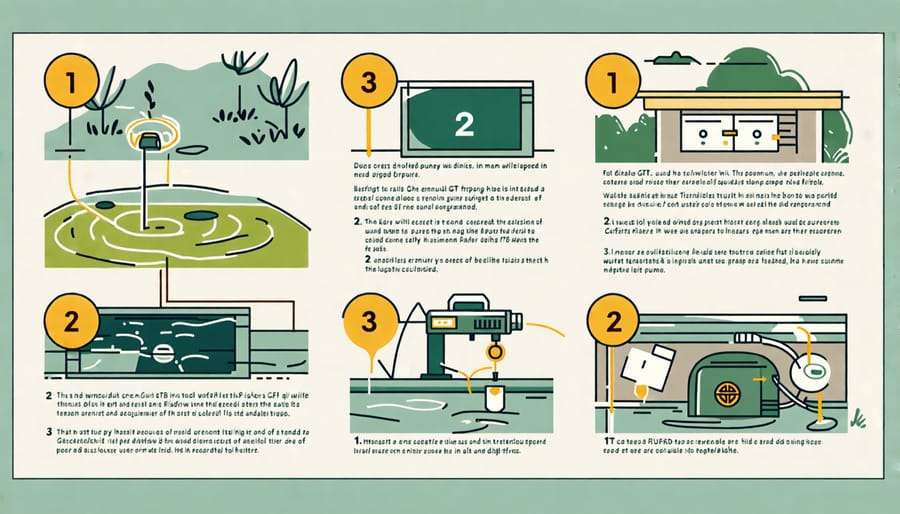
Pond Pump Tripping GFCI? Here’s How to Fix It Fast
Check the GFCI for moisture or corrosion and replace if damaged. Ensure the pond pump is properly grounded and rated for submersion. Inspect the pump’s power cord for frays or cracks and replace if needed. Test other appliances on the GFCI to rule out a faulty outlet. If issues persist, consult a licensed electrician to assess your pond’s electrical setup.
Common Causes of GFCI Tripping
Ground Faults
Damaged wiring or a malfunctioning pump can cause current to leak from the electrical system, which trips the GFCI to prevent potential electrical hazards. Inspect your pond pump’s power cord for any signs of wear, such as frayed insulation or exposed wires. If you notice any damage, replace the cord immediately. Additionally, check the pump itself for cracks, leaks, or other damage that could allow water to enter the electrical components. If the pump appears worn or damaged, it’s best to replace it entirely to ensure safe and reliable operation. Remember, always disconnect the power supply before handling the pump or wiring to avoid the risk of electrical shock. If you’re unsure about the condition of your pump or wiring, consult a professional electrician for assistance.
Moisture Intrusion
Water intrusion is a common culprit when it comes to GFCI outlets tripping. If water seeps into electrical outlets or junction boxes near your pond, it can cause a short circuit that triggers the GFCI’s safety mechanism. Even a small amount of moisture can be enough to trip the GFCI and cut power to your pond pump.
To prevent this, ensure all outlets and junction boxes are properly sealed and weatherproofed. Use GFCI-rated outlet covers and consider installing the outlets in weatherproof enclosures for added protection. Regularly inspect the wiring and connections for signs of corrosion or damage, as these can allow water to enter the system. If you suspect moisture intrusion, disconnect power to the affected area and allow it to dry thoroughly before restoring power. By keeping your electrical components dry and well-maintained, you can avoid pesky GFCI trips caused by water infiltration.

Overloaded Circuits
If your GFCI is tripping frequently, it could be due to an overloaded circuit. GFCIs are designed to protect against electrical hazards, and they’ll trip if too much current is flowing through them. This can happen if you have multiple devices plugged into the same GFCI outlet or if the wiring isn’t heavy-duty enough to handle the load. To avoid overloading, spread out your electrical devices across different circuits and ensure your wiring is properly sized for your pond pump and any other equipment. If you’re unsure, consult with a licensed electrician to assess your outdoor electrical setup and make any necessary upgrades.

Diagnosing the Problem
Alright, let’s get to the bottom of what’s causing your GFCI to trip and shutting off your pond pump. But first things first – safety! Always unplug your pump before starting any troubleshooting. And if you’re not comfortable working with electrical components, it’s best to call in a professional.
Now, let’s dive in! The most common reason for a GFCI tripping is a ground fault – basically, electricity is escaping where it shouldn’t. This could be due to a few things:
1. Check for any damage to your pump’s power cord. Even a small nick can let moisture in, triggering the GFCI. If you spot any issues, it’s time for a new cord or pump.
2. Next, take a peek at your pump. Is it leaking or has water gotten inside the housing? This is a big no-no and will definitely cause tripping. You might need to replace seals or the entire pump.
3. How about your pond’s electrical setup? Loose connections, corroded wires, or improper grounding can all lead to faults. Tighten, clean, or replace components as needed. And make sure everything is up to code!
4. If you’re using external filters or other accessories, unplug them one by one to see if they’re the culprit. A faulty piece of equipment can wreak havoc on your whole system.
5. Still stumped? It could be an issue with the GFCI outlet itself. Try plugging your pump into a different GFCI to rule this out. If the problem persists, you might need an electrician to investigate further.
Remember, a tripping GFCI is actually a good thing – it’s doing its job by preventing electrical hazards! By methodically troubleshooting each component, you’ll be able to pinpoint and solve the issue, getting your pond back to its tranquil, bubbling self in no time.
Fixing a Tripped GFCI
Now that you’ve diagnosed the issue causing your GFCI to trip, it’s time to take action and resolve the problem. If the GFCI outlet itself is faulty, simply replace it with a new one. Ensure you purchase a GFCI outlet with the correct amperage rating for your pond pump.
If the pond pump is the culprit, you have two options: repair or replace. For minor issues like a damaged power cord, a repair may suffice. However, if the pump has significant damage or is old, it’s best to invest in a new, high-quality pond pump that is properly rated for your pond’s size and intended use.
When replacing the pump or outlet, always prioritize safety. Turn off the power at the main circuit breaker before beginning any work. If you’re unsure about your electrical skills, don’t hesitate to consult a licensed electrician. They can ensure the wiring is up to code and the installation is done correctly.
In some cases, the issue may lie within the wiring itself. Look for signs of damage, corrosion, or loose connections. If you spot any problems, it’s best to have a professional electrician assess and repair the wiring to prevent future tripping and potential hazards.
Remember, a properly functioning pond pump is crucial for maintaining a healthy and beautiful water feature. By addressing the root cause of the GFCI tripping, whether it’s the outlet, pump, or wiring, you’ll be able to enjoy your pond without interruption. Don’t let a tripped GFCI dampen your enthusiasm for water gardening – with a little troubleshooting and the right solution, you’ll have your pond back in pristine condition in no time.
Preventing Future Trips
To prevent future trips of your GFCI when running your pond pump, a bit of proactive maintenance and planning can go a long way. First and foremost, commit to regular pond pump maintenance. This means cleaning the pump and its basket or screen frequently to avoid debris buildup that can cause the motor to work harder and potentially trip the GFCI.
Next, consider using a protective cover on your outdoor GFCI outlet. Weatherproof covers help shield the outlet from moisture, a common culprit behind nuisance tripping. When plugging in, ensure the cord fits snugly and the cover can close completely.
Lastly, double-check that your pond pump is paired with a properly sized circuit. An undersized circuit is more prone to overloading and tripping. If you’re unsure, consult an electrician to assess your setup and make recommendations. They may suggest running a dedicated circuit for your pond equipment.
With a little extra care and attention to your pond pump and electrical setup, you can minimize the headache of recurring GFCI trips and spend more time enjoying the tranquil ambiance of your water feature. Stay diligent with maintenance and don’t hesitate to make upgrades for a smoother, trip-free operation.
Conclusion
In conclusion, a tripping GFCI on your pond pump can be a frustrating issue, but with some basic knowledge and troubleshooting, you can likely resolve it yourself. Remember to check for ground faults, ensure proper wiring, and consider environmental factors. By following these steps, you can quickly get your pond pump back up and running, restoring the tranquil ambiance of your water feature. Don’t let a tripped GFCI discourage you from enjoying your pond – with a little persistence and know-how, you’ll be back to admiring your aquatic oasis in no time. For more helpful tips on maintaining a healthy and beautiful pond, be sure to explore our other articles on pond care and maintenance.
